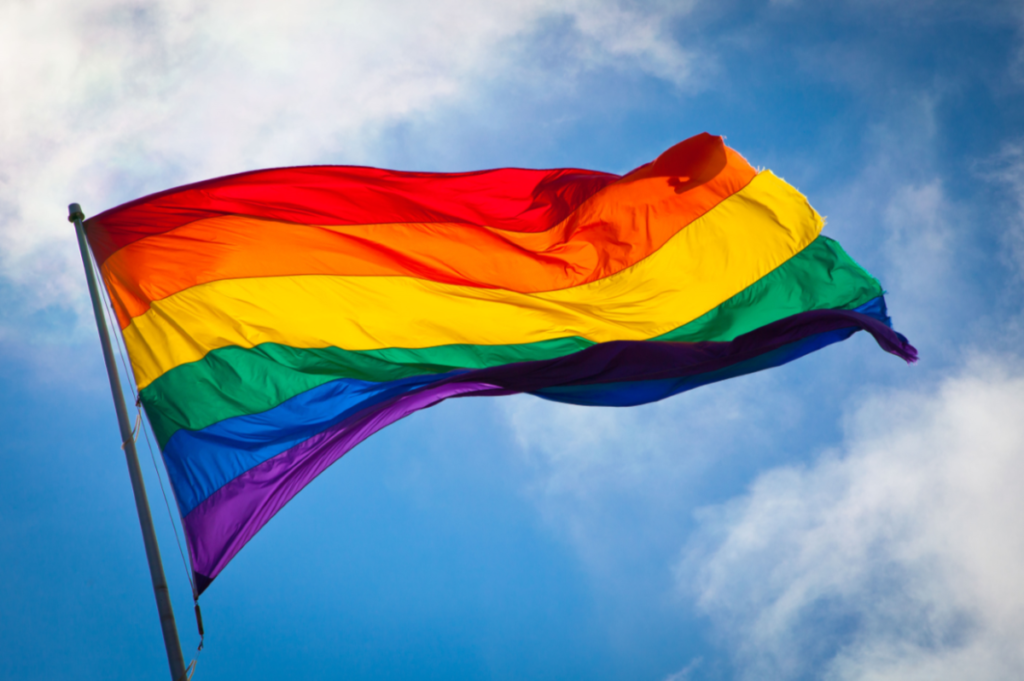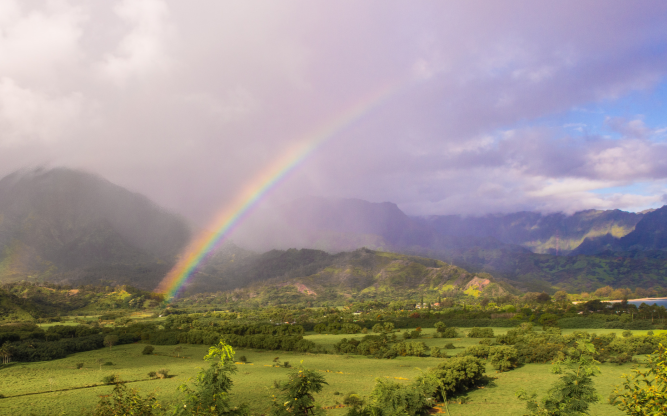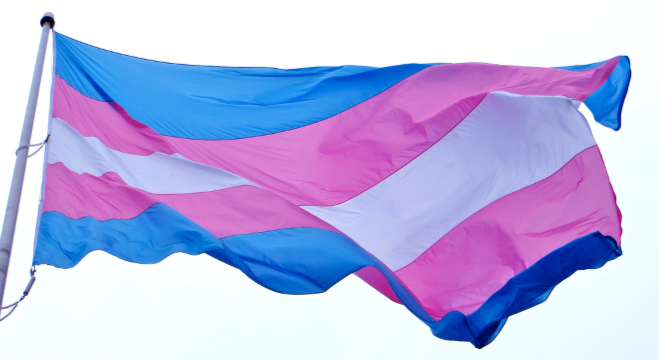
Kua, Benson. (2010, August 5). Rainbow. [Photograph]. Retrieved from Flickr. https://flic.kr/p/8ANxnj
The history of the rainbow flag is a rich, fascinating, and very recent one!
Artist and activist Gilbert Baker is credited with creating the first pride flag, meant to represent the gay community. He was approached by Harvey Milk, the first openly gay person elected to public office in California, in 1977 to create a symbol of pride for the community. “Flags are about proclaiming power” Baker said.
Baker was inspired by the United States flag, with its series of stacked lines, and also by Pop Art of the time. Several communities at the time had reclaimed the Pink Triangle as a symbol of queer power. The Pink Triangle was used in Nazis concentration camps to identify men imprisoned for their homosexuality. Despite the Pink Triangle’s prevalence, Baker argued that there was a need for a new symbol “We needed something beautiful. Something from us.”
![Image of Harvey Milk being sworn into office.
The Harvey Milk Foundation. (1977). Milk Sworn In. [Photograph]. Retrieved from. http://milkfoundation.org.](https://scholarblogs.emory.edu/lgbtflags/files/2020/06/Flag-for-History-2-1.png)
The Harvey Milk Foundation. (1977). Milk Sworn In. [Photograph]. Retrieved from. http://milkfoundation.org.
The flag was first flown in San Francisco’s United Nation’s Plaza in June of 1978. Some historians have argued that the idea of the rainbow flag came about because of the rainbow’s link to actress Judy Garland. A strong supporter of the gay community, gay men were occasionally called “friends of Dorothy”, in reference to her role in The Wizard of Oz. Baker stated, however, that the idea of a rainbow pride flag did not stem from Garland’s singing of “Somewhere Over the Rainbow”.
According to Baker, “It’s a natural flag. It comes from the sky”.

Marra, Chris. (2014, June 1). Hawaii Rainbow. [Photograph]. Retrieved from Flickr. https://flic.kr/p/q5UP6G
The meaning of each color is as follows:
- Red: Vitality
- Orange: Healing
- Yellow: Sunlight
- Green: Nature
- Indigo: Harmony
- Violet: Spirit
The original LGBT pride flag contained the colors hot pink, meant to represent sexuality, and turquoise, meant to represent magic or art, depending on the source.
Hot pink was removed from the original pride flag because fabric and dye in that color was difficult to find. Turquoise was removed to make the flag appear more symmetrical when hanging vertically.
In 1988, a man named John Stout and the LGBT Pride Flag found national attention when he sued his West Hollywood landlords for the right to display the flag on his balcony.
He won.
The first transgender pride flag was designed by transgender woman and Navy veteran Monica Helms in 1999, and flew at a pride parade in Phoenix, Arizona the subsequent year.

Image by: torbakhopper. (2012, November 20). Be Not Afraid [Photograph]. Retrieved from Flickr. https://flic.kr/p/FYSqZH. Publish CC BY-ND 2.0)
“The stripes at the top and bottom are light blue, the traditional color for baby boys. The stripes next to them are pink, the traditional color for baby girls. The stripe in the middle is white, for those who are intersex, transitioning or consider themselves having a neutral or undefined gender. The pattern is such that no matter which way you fly it, it is always correct, signifying us finding correctness in our lives”
Sources
Grovier, K. (2016, June 15). The history of the rainbow flag. BBC – Culture, p. Web. Retrieved from http://www.bbc.com/culture/story/20160615-the-history-of-the-rainbow-flag
San Francisco Travel Association. (n.d.). A Brief History of the Rainbow Flag | San Francisco, CA. Retrieved from http://www.sftravel.com/article/brief-history-rainbow-flag
Sankin, A. (2012, November 20). Transgender Flag Flies In San Francisco’s Castro District After Outrage From Activists | HuffPost. Huffington Post, p. Web. Retrieved from https://www.huffingtonpost.com/2012/11/20/transgender-flag_n_2166742.html
One Reply to “History of the Rainbow Flag”
Comments are closed.